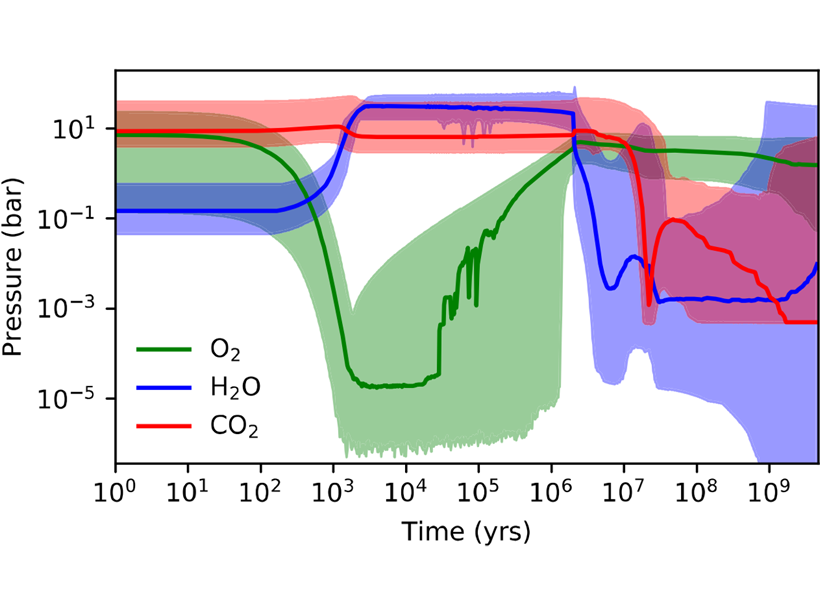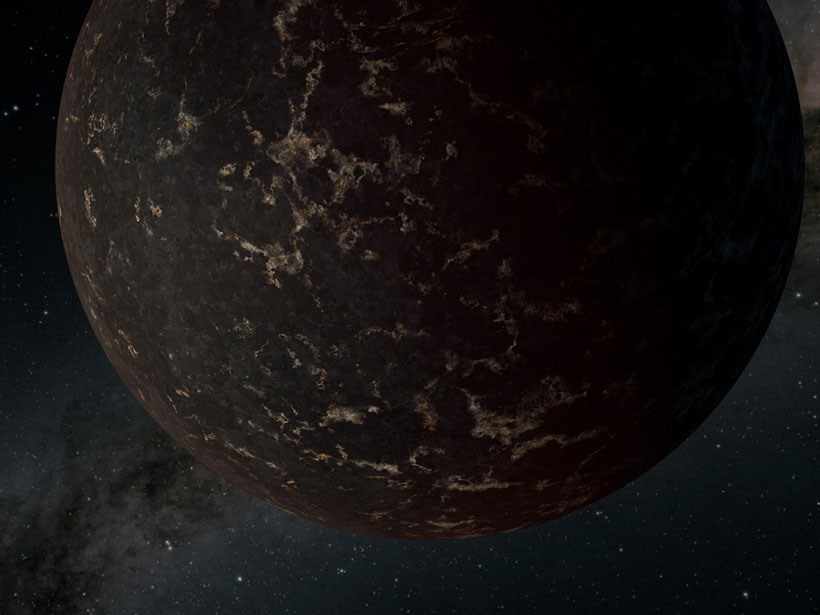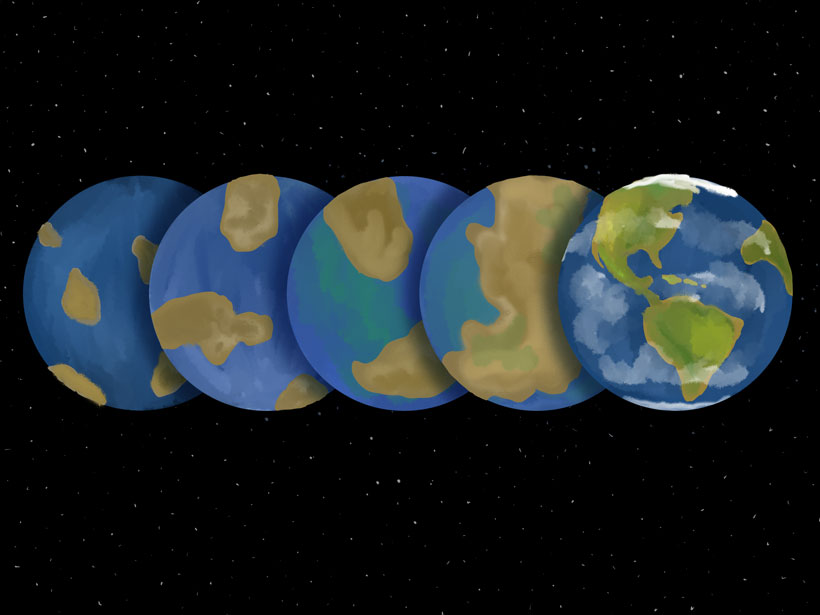While some Earth-like worlds can generate significant O2 only by biology, “waterworlds” and “desert worlds” can build up O2 even without life because of chemical changes from atmosphere loss to space.
exoplanets
Superlasers Shed Light on Super-Earth Mantles
By compressing iron oxide to pressures expected inside a large and rocky exoplanet, scientists discovered that such mantles could layer, mix, and flow in ways very different from those inside our planet.
Seeing Stripes in the Atmosphere of a Brown Dwarf
A planet-hunting satellite’s observations of the nearby system Luhman 16 AB reveal bands of clouds, high-speed jets, and polar vortices.
Podcast: A Modern Way to Look for Aliens
The search for extraterrestrial intelligence is undergoing a 21st century transformation. The field is poised to lead the way as an example of interdisciplinary research and inclusive science.
Airless Exoplanet’s Mantle Could Flow in Halves
With no atmosphere in the way, measurements of the planet’s surface temperature are the first observational constraints on mantle convection models for an exoplanet.
Exoplanet Earth: An Ultimate Selfie to Find Habitable Worlds
Aliens spying on us from afar is a common science fiction trope. Soon we might know what E.T. would see through a telescope. And that information could help identify other Earth-like planets.
Preparing for a Handoff
Scientists with Interstellar Probe, a proposed 50-year flight to interstellar space, are pondering how to plan and carry out a multigenerational mission.
Machine Learning Can Help Decode Alien Skies—Up to a Point
Astronomers are testing the tools that might help them keep up with the upcoming storm of exoplanet atmosphere data.
Looking Back at Our Pale Blue Dot
Astronomers model changes in Earth’s chemical signature over the past 4 billion years to improve the search for Earth-like exoplanets.
Dust from Colliding Asteroids Masqueraded as a Planet
New analysis of Hubble Space Telescope images suggests that Fomalhaut b, once believed to be an extrasolar planet, is, in fact, a cloud of dust that likely formed from the collision of enormous asteroids.










